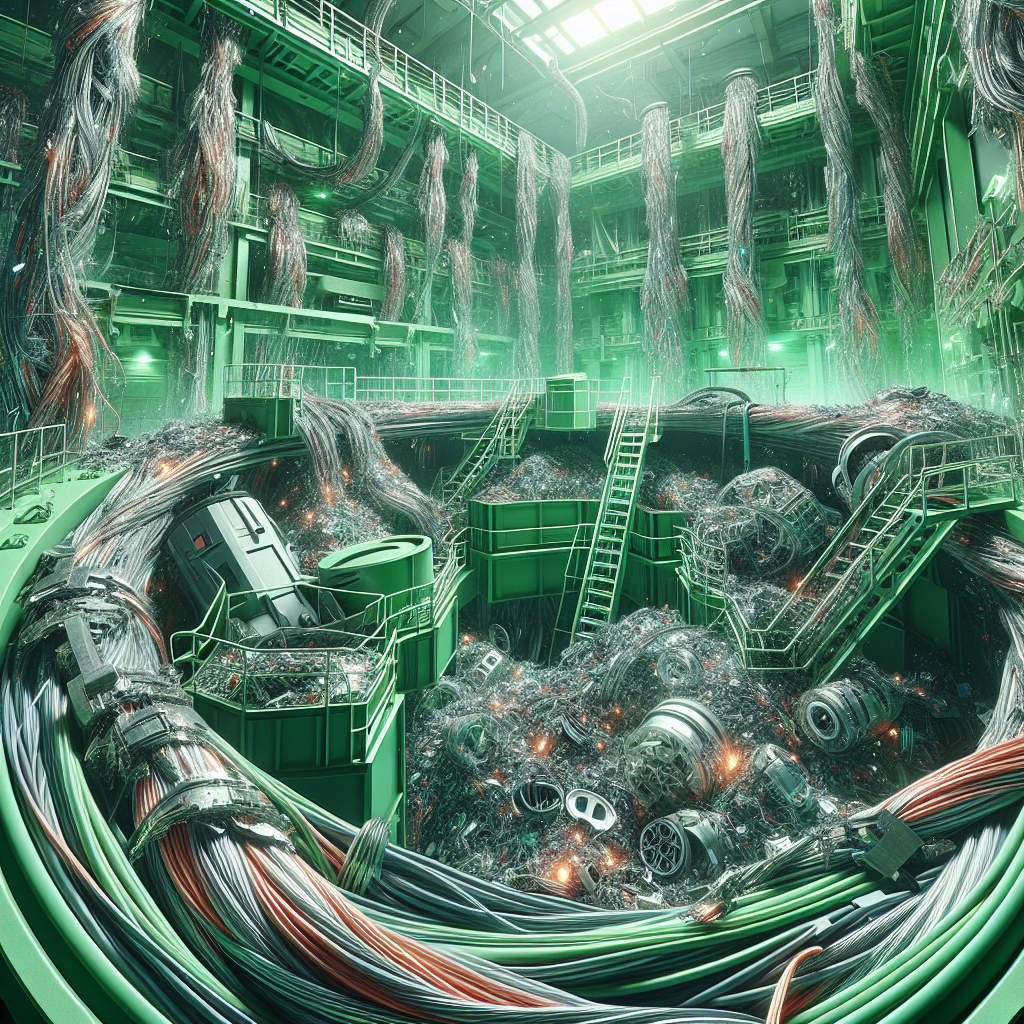Blog Ecobraz Eigre

Cable Recycling: Copper and Aluminum Recovery
This article discusses the processes and benefits of recycling electrical cables, highlighting the recovery of copper and aluminum. It explains the technical steps involved, the applicable legal regulations and the importance of correctly disposing of electronic waste, in line with the guidelines of the National Solid Waste Management Information System (SINIR).
Importance of Cable Recycling
Electrical cables are mostly composed of copper and aluminum, strategic metals with high economic and environmental value. Recycling these materials contributes to a reduction in mineral extraction, reducing environmental impacts such as deforestation and soil and water contamination.
In addition to the environmental benefit, the recovery of these metals makes it possible to reintroduce them into the production cycle with lower energy consumption compared to primary extraction, contributing to corporate sustainability and compliance with the National Solid Waste Policy (Law no. 12.305/2010).
Technical Processes in the Recovery of Copper and Aluminum
The cable recycling process begins with the sectioning of the wires and the removal of contaminating parts, such as plastic coatings. This is followed by the physical separation of the metals using methods such as granulation, chemical stripping and casting.
The granulation stage consists of mechanically crushing the cables to fragment the material, facilitating separation. Chemical stripping removes residual plastic residues and casting allows the metals to be recovered in their pure form.
To guarantee the quality of the recovered material, the procedures must follow technical standards, such as those established by the National Institute of Metrology, Quality and Technology (Inmetro).
Legal and Regulatory Aspects
The recycling and management of electrical cable waste must comply with the provisions of the National Solid Waste Policy (Law no. 12.305/2010) and the complementary regulations of the National Solid Waste Management Information System (SINIR), available at sinir.gov.br.
The activities must ensure environmental control in accordance with the rules of CETESB (cetesb.sp.gov.br), including licensing and monitoring of the solid waste generated.
Destination and Collection of Electronic Waste
For the proper disposal of cables and other electronic waste, specific collection points for reverse logistics should be used, as directed by SINIR. Scheduling for specialized collection can be done through the electronics scheduling platform.
This procedure ensures the correct disposal and reuse of materials, avoiding improper disposal in landfills or natural environments.
Safety in the Sanitization of Devices and Media
When it comes to disposing of storage devices such as hard disks (HD) and digital media, it is essential to carry out sanitization to avoid information risks. Specialized services, following certified techniques, should be used and can be scheduled at electronics scheduling.
Conclusion
The recycling of electrical cables to recover copper and aluminium is an essential practice for environmental sustainability, compliance with current legislation and corporate responsibility in solid waste management. The adoption of the best techniques and the use of appropriate collection and sanitization services guarantee the effectiveness of the process and the safety of operations.

Deixe um comentário
O seu endereço de e-mail não será publicado. Campos obrigatórios são marcados com *